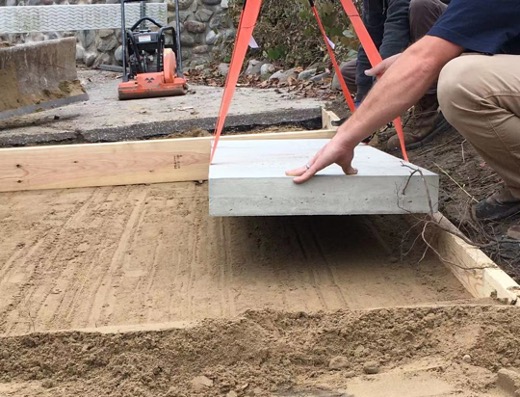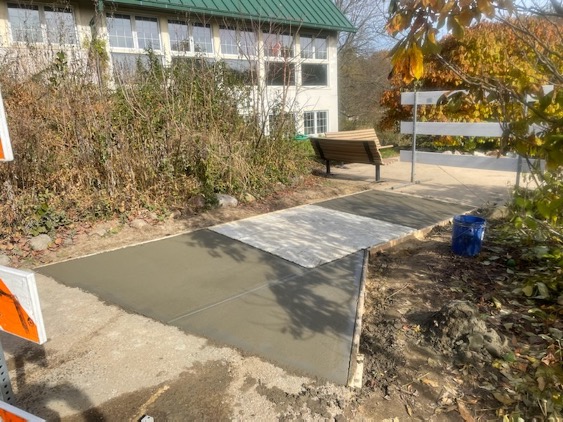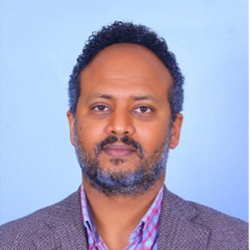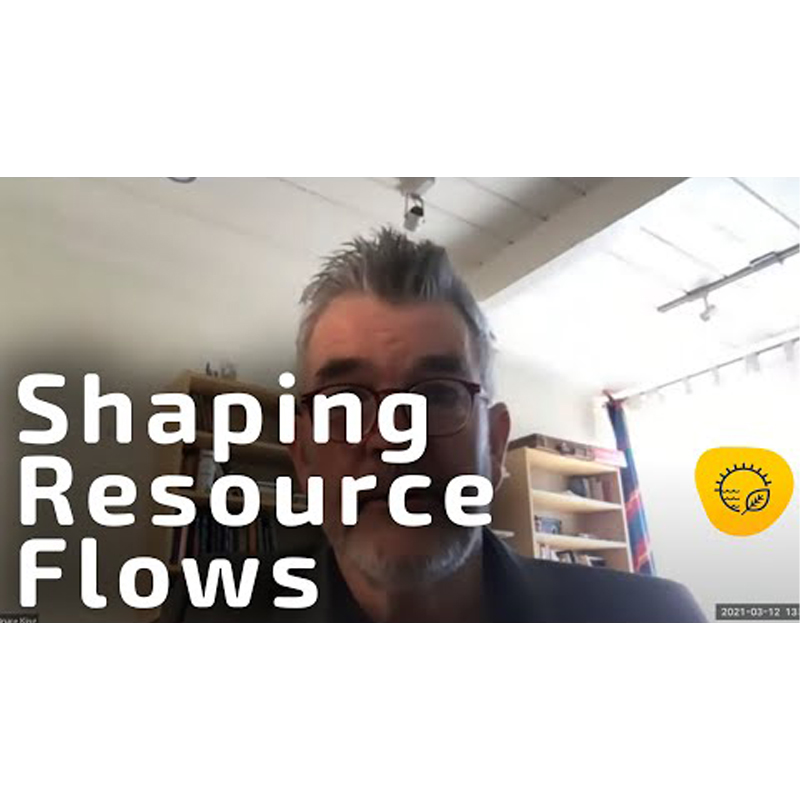IN THE NEWS
Leslie Science and Nature Center installs Carbon-sequestered Bendable Concrete
Partnering with the City of Ann Arbor and Leslie Science & Nature Center, the CLCBE led a field demonstration of carbon-sequestered bendable concrete for sustainable city construction. A set of bendable concrete slabs, containing ingredients including industrial waste streams and cured with CO2, were prepared for sidewalk application. The finished slabs were placed adjacent to newly cast sidewalk sections with traditional concrete. This sidewalk will be monitored for long-term performance in Michigan’s outdoor environment.
The project is the world’s first field application of carbon-sequestered bendable concrete and marks an important milestone towards carbon neutrality of the built environment. By sequestering carbon and with self-healing capability, bendable concrete is designed for a drastic reduction in lifecycle emissions of civil infrastructure. Demonstration projects like this will continue improving the technology, thus bringing it closer to the broader construction market.
This demonstration project was led by Dr. Duo Zhang, a co-inventor of the carbon-sequestered bendable concrete which sequesters up to 29.6% CO2 by weight of cement. The other inventors include Professors Brian Ellis and Victor Li. Support on research on carbon-sequestered bendable concrete from the Department of Energy, the College of Engineering (the Blue Sky Project), and the Department of Civil and Environmental Engineering is gratefully acknowledged. This demonstration project is made possible with a grant from the Office of Sustainability led by Dr. Missy Stults, Sustainability and Innovations Manager, City of Ann Arbor.

Fig. 1 – Placement of carbon-sequestered bendable concrete slabs (photo source: CLCBE)

Fig. 2 – Finished bendable concrete section (middle) next to freshly poured traditional concrete (photo courtesy: Scott Spooner, City of Ann Arbor Parks and Recreation Services)
Welcome to CLCBE!

Dr. Esayas Gebreyouhannes Ftwi
The CLCBE is honored to host Associate Professor Gebreyouhannes as a Visiting Scholar in 2021-2022. He is a faculty member at the Addis Ababa Institute of Technology of the Addis Ababa University, Ethiopia. Professor Gebreyouhannes is a specialist in Concrete Materials & Structures and will collaborate with CLCBE researchers on carbon sequestration in plant fiber based Engineering Cementitious Composites.

Dr. Suleyman Gokce
The CLCBE is proud to host Associate Professor Gokce as a Visiting Scholar in 2021-2022. Dr. Gokce is on the faculty of engineering at the Bayburt University in Turkey. He specializes in functionalized cement-based composites. With an award from the Turkish Research Council (TUBITAK), Dr. Gokce intends to collaborate with CLCBE researchers on 3D printing of cementitious composites.

Devki Desai, PE
The CLCBE is delighted to welcome Devki Desai back to UM. Devki completed her MS degree and research as an NSF fellow in CEE before joining SOM’s structural group in California. She is currently a structural project engineer in New York with HOK, one of the largest US-based global architecture/engineering firms. Devki is pursuing her PhD in carbon reduction in the building sector, using a multi-objective structural and thermal approach at the material micro-scale, building-scale, and sector-level. The CLCBE is delighted to have this opportunity to collaborate with HOK via Devki’s research initiatives.
Featured Articles in the Press
The Economist, quoted in “How cement may yet help slow global warming,” 11/2/2021.
The Conversation: Henrion, L., Zhang, D., V. Li, and V. Sick, “Bendable concrete and other CO2-infused cement mixes could dramatically cut global emissions”, 2/14/2021.
The Hill, What is bendable concrete, and how can it help fight climate, It’s also called “low embodied carbon concrete.” 3/1/2021.
Speaking engagement
Panel Discussion on Infrastructure Investment Policies: The Potential Impacts for Climate Change and Labor
The Biden administration has put climate change, infrastructure investment and job growth as top agenda items, releasing strategies, making appointments and developing legislation with Congressional partners in these areas. A panel discussion was organized by UMDC, the College of Engineering, the Ford School of Public Policy and AAUM. Victor Li is joined by Betsey Stevenson and Volker Sick to shed light on the policies, technologies and economic impact of these recent initiatives.



